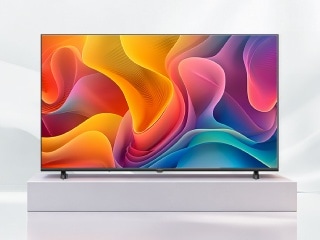- Home
- Others
- Others Features
- How to Buy the Best Air Purifier in India?
How to Buy the Best Air Purifier in India?

The air quality in India is dismal. Post-Diwali, Delhi has started to look like an apocalyptic landscape. The future is here, without the flying cars or personal robots, but with the poisonous air. But even outside of Delhi, and all through the year, the air quality across major cities of India has been highly deteriorating. There are a lot of different reasons for this - rapid construction of our cities, and the widespread destruction of trees this involves, the huge number of cars, burning crop stubble in farms, burning trash in cities, and also, the burning of crackers, all come together to make our cities unliveable. And while there might be some long term solutions to these problems, the fact is that just as most of us have gotten used to living with water purifiers in our homes, it seems we are going to have to accept air purifiers in India too.
Indoor air quality can actually be worse than the air outside - after all, the air in your house isn't likely to be imported from Canada - and the WHO states that benzene, carbon monoxide, formaldehyde, naphthalene, nitrogen dioxide, polycyclic aromatic hydrocarbons (especially benzo[a]pyrene), radon, trichloroethylene, and tetrachloroethylene have indoor sources, are known for their hazardousness to health and are often found indoors in concentrations of concern to health. So should you invest in an air purifier?
We Tried 5 Popular Air Purifiers Over a Year. Here’s Everything We Learnt
"If pollutants like pollen, dust, dust mites, mould, tobacco smoke, and pet dander trigger seasonal allergies and have you reaching out for a box of tissues, you need an air purifier," says Jayati Singh, Business Head - Air, Philips Personal Health, India. "If you are among the 20-28 million asthmatics in the country. If you have children in the house, with underdeveloped immune systems, making them particularly susceptible to air borne pollutants. If someone in your house is pregnant. If your house/ office is in a construction zone. If you have a pet in the house. [In any of these scenarios] an air purifier is the way to go."
![]()
"While we get concerned about the PM2.5 peaking during winters, there are many other invisible pollutants which invade our airway all year, for example in autumn and spring, pollen is high," adds a spokesperson for Sharp. "Summer sees level of dust mite increasing indoor. During monsoon and winters the mold and fungal growth cause danger to children. However virus, chemical fumes, and toxic gases keep bothering us through the year."
"We take the PM2.5 seriously as it is measurable, but blissfully ignore the other Indoor pollutants since they are invisible and not measured," the spokesperson added. "But most damage is caused by indoor pollutants. Don’t our children fall sick all year? Are there no asthma symptoms through the year? So why should we be concerned about bad air only during winters?"
HEPA filter
The problem is that, as consumers, we don't really know enough about these products to make a good decision when it's time to buy one. Go online, and you'll see any number of products on offer, from ionisers that release charged particles to separate the dust from the air, to humidifiers and other similar products that claim they will improve the air quality by pushing the dust out of the air, and air filters that work like a water purifier, in that it sucks in the air from the room, pushes it through a filter, and pushes clean air out. These use High Efficiency Particulate Air (HEPA) filters (or HEPA-type filters in cheaper models), and are used in hospitals as well - most people recommend avoiding ozonisers and ionisers.
"Technology such as Ozone generators, which produce significant amounts of ozone, a strong oxidant gas which can oxidise many other chemicals are to be avoided at all cost," Singh adds. "Negative ionisation technology is also debated upon for its by-product being ozone." This was also reiterated to us by Sharp.
We'd go a step further and suggest considering only using purifiers that have a HEPA filter, not a HEPA-type filter, since HEPA is a standard which is tested and certified, so it ensures that you're getting something that actually works.
"You want the purifier to filter out PM2.5 - that's particles that are 2.5 microns in size," explains Dr. Mahesh Gupta, Chairman and Managing Director, Kent RO systems. The company is well established in water purification in India, and it has been in the air purifier market for a couple of years now. "You want a purifier that has a proper HEPA filter, which you should change every six months to one year."
Aside from the HEPA filter, many companies have other filters such as pre-filters, as Singh pointed out. Altanta Healthcare's CEO Vibhor Jain adds that consumers should look at the stages of filtration to make sure that as many harmful types of particles are being removed. "An ideal Air Purifier should have between 5-9 filters that include a Pre-filter, ESP filter, Molecular Sieve Media, HEPA/ ULPA, Activated Carbon, Cold Catalyst, and Fibre Filter," he says, adding that the grade, or quality, of the filters is also important. "When we speak of quality or grade of the filters, we must make note of the thickness of the filters, type of HEPA filter used, Carbon type, material and surface area of the filters. This is the core of any filtration technology and goes on to define the efficiency of filtration."
![]()
A lack of standards
Looking for a genuine HEPA filter is one of the ways that you can get around the lack of standards for air purifiers in India. Today, you could slap a filter and a fan together and sell it as an air purifier - in the US and in China there are several stringent standards and testing that is done to ensure that air purifiers up to the standards, but this is missing in India.
Girish Bapat, Director, West and South Asia for the Swedish company Blueair, says that part of the problem is that the industry in India is very nascent. "There are no standards right now, and we have been lobbying to ensure that there is a proper standard in place in India, that all manufacturers have to meet," he says. "Right now, you can have to look at the CADR (Clean Air Delivery Rate) and the Air Change Per Hour, which is how many times the purifier cleans the air per hour," he adds, "in order to get a good idea of whether it meets your needs. But instead many manufacturers just say, 'this clears 100 square feet and that clears 200', which is not telling the consumer anything."
Bapat also stresses on the importance of a HEPA filter, and adds, "A HEPA filter will remove most of the PM 2.5, allergens and mites, from the air. It an also filter out smaller particles, like cigarette smoke," he adds. "You should check the particle size that is being filtered, it should be 0.3 to 0.1 which catches even viruses that make people fall sick. But that doesn't remove bad odours and pollutants in gases. For that, activated carbon is best. Sulphur gases and carbon fumes from the outside, cooking releases gases, so a carbon filter is very important too."
![]()
The problem is that many manufacturers don't give details to the degree that Bapat is suggesting. You'll find some mentioning the CADR, others talking about the effective area that the purifier can clear, and yet others talking about particle sizes; it's rare to see all this information together in one place.
Xiaomi is another company that entered the air purification space recently - it launched its first purifier last year, and entered India with the second generation Xiaomi Mi Air Purifier 2 this year. Jai Mani, India - Product Manager for Xiaomi - believes that there is need for an industry standard.
"There are already some really good standards in place," says Mani. "In China, in the US, in Europe. I don't think we need to replicate this but instead, we should have an industry level agreement to ensure that purifiers being sold in India meet these international quality standards."
"We had wanted to do that in time for the Air Purifier 2 launch but it didn't work out," he adds, "but we're going to keep working with the industry to ensure that it's in place by the time we launch our next product."
![]()
What else should you check?
Aside from ensuring that the air purifier has a genuine HEPA filter, and that it filters out PM2.5 particles at a high CADR - so that the air in the room is being continually cleaned - there are a few other things you should keep in mind. "The CADR shows you how much air is coming out of the purifier," says Bapat, "and it should change the air in the room at least five times per hour. Otherwise, you're not going to be breathing clean air."
"Customers in India like to compare specs a lot," Mani says, "but this is one product where I don't think that's actually a great idea. I think you should focus on how transparent the brand is being, like when it gives you indicators about clean air, so you actually know what the purifier is doing. Look at things like the cost of the filter, and how easy that is going to be to replace. Look for smart features, by which I don't just mean convenience, but smart like automatically adjusting the filter based on the air quality, and sending you an alert to change the filter."
"Things like noise output are also important, because the bedroom is the best place to keep one of these - I mean, if you want to move it around to be in whichever room you're in, that's great, and ours is small and light enough that you can actually do this, but at night you don't want something that will keep you up," he adds. "And it also has another feature that allows you to turn off all the LEDs on the device while it's operating, since some people don't like lights in their room at night."
He also points out that you need to find out before buying the purifier where you can get replacement filters from, and how much it will cost you. Also find out if you can do the replacement yourself, or if you need to get it done from the company. "Ours is a really simple integrated filter that you can change yourself," says Mani, "but there are other brands with multiple filters, which you need to change separately, they have different lifespans, and it's often quite complicated."
![]()
One thing he cautions is to avoid buying purifiers with cleanable filters. "People think it will be cheaper in the long run, but you can't do it properly, it won't be as effective, and if you damage the filter even slightly - something small you don't even see - then it won't really be cleaning the air anymore." This is something that Sharp also repeated, stating, "a HEPA filter should never be washed."
Philips' Singh adds that you should buy a purifier whose coverage is bigger than the room you're planning to clean. "This way you can run the machine effectively on its (quieter) 'low' setting resulting in less noise and less energy consumption," she points out.
"Also, there are some factors better suited for certain situations. For instance, the HEPA filter is a boon for an asthamatic, while Ozone based purifiers should be strictly avoided," Singh adds. "A device with a pre-filter along with a HEPA filter is a must for people residing in areas where construction work is going on, as there is a lot of dust. For people residing in areas with issues of gases with odour and with pets at home, Activated Carbon works best, while ECARF certified models with HEPA filters are the ideal choice for people with allergies."
We Tried 5 Popular Air Purifiers Over a Year. Here’s Everything We Learnt
One more point she makes is to make sure that the purifier comes with a warranty, and offers good customer service and easy replacement of filters.
"The power consumption and the noise levels are not to be worried about," the Sharp representative said. "The fan speed of the purifier will depend on the room sizes and the air cleaning capacity. A good air purifier, while using in a 130sq feet bedroom, should be able to clear the air five to six times in an hour."
"Please do not look for cosmetic features like air quality sensors, remote control, mobile app, and so on," the spokesperson added, "but look for hardcore performance in eliminating pollutants, and verification of claims through third-party labs or demonstrations."
Catch the latest from the Consumer Electronics Show on Gadgets 360, at our CES 2026 hub.
Related Stories
- Samsung Galaxy Unpacked 2025
- ChatGPT
- Redmi Note 14 Pro+
- iPhone 16
- Apple Vision Pro
- Oneplus 12
- OnePlus Nord CE 3 Lite 5G
- iPhone 13
- Xiaomi 14 Pro
- Oppo Find N3
- Tecno Spark Go (2023)
- Realme V30
- Best Phones Under 25000
- Samsung Galaxy S24 Series
- Cryptocurrency
- iQoo 12
- Samsung Galaxy S24 Ultra
- Giottus
- Samsung Galaxy Z Flip 5
- Apple 'Scary Fast'
- Housefull 5
- GoPro Hero 12 Black Review
- Invincible Season 2
- JioGlass
- HD Ready TV
- Laptop Under 50000
- Smartwatch Under 10000
- Latest Mobile Phones
- Compare Phones
- Samsung Galaxy A07 5G
- Vivo Y500i
- OnePlus Turbo 6V
- OnePlus Turbo 6
- Itel Zeno 20 Max
- OPPO Reno 15 Pro Mini 5G
- Poco M8 Pro 5G
- Motorola Signature
- Lenovo Yoga Slim 7x (2025)
- Lenovo Yoga Slim 7a
- Realme Pad 3
- OPPO Pad Air 5
- NoiseFit Pro 6R
- Xiaomi Watch 5
- Acerpure Nitro Z Series 100-inch QLED TV
- Samsung 43 Inch LED Ultra HD (4K) Smart TV (UA43UE81AFULXL)
- Asus ROG Ally
- Nintendo Switch Lite
- Haier 1.6 Ton 5 Star Inverter Split AC (HSU19G-MZAID5BN-INV)
- Haier 1.6 Ton 5 Star Inverter Split AC (HSU19G-MZAIM5BN-INV)
















